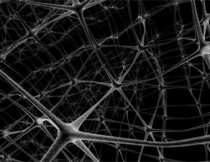ASD Brains are Connected Differently

Read other items from "MindSpec presents Society for Neuroscience 2012"
by Wayne Pereanu
While much work is focused on identifying particular brain regions that may underpin the deficits exhibited in autism spectrum disorder, a current theory suggests that the wiring connecting different regions may instead be a more significant factor. This “functional underconnectivity” theory states that this mis-wiring results in either mis-communication or no communication between brain regions that need to stay in sync with each other.
Travis Nesland presented unpublished research at a poster session on Sunday describing a novel approach to examine the connectivity between brain regions. His study described using the PageRank algorithm with brain imaging data that Larry Page and Sergey Brin developed and used to start up Google. This approach has been shown to have great value in describing the connectivity of linked elements, such as the brain. This work showed that underlying structural connectivity of ASD brains is significantly different than neurotypical controls.
The results of this study support a slight variation to the “functional underconnectivity” theory. They suggest that ASD brain regions are connected differently to each other, not just under-connected. In addition, the study points out the specific regions which have different connections. This information is new and may lead to new studies on these identified candidate brain regions.

